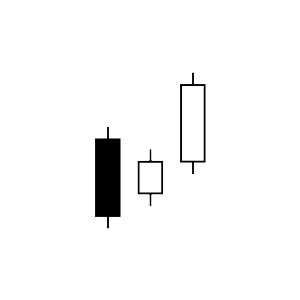Explanation:
The daily volume of shares traded. Given that there are two sellers for every buyer, one can estimate the trading volume to be equal to 50% of the total number of shares traded.
Explanation:
Since the initial price and the closing price are equal or nearly equal, a Doji candlestick pattern resembles a cross.
The correct answer:
Reversal chart pattern when the price of a security increases to a certain level and then decreases from that level. It then increases again at that level before finally declining once again.
Explanation:
When security suffers a significant upward or downward movement, followed by a brief period of consolidation, and then resumes moving in the same direction, the result is a continuation chart pattern called a pennant pattern.
The correct answer:
real body
Explanation:
A rising wedge is sometimes regarded as a bearish chart pattern that suggests a trend reversal following a bull run. A rising wedge is said to indicate a potential negative breakthrough. The pattern, like previous wedges, widens near the bottom and then contracts as the price rises and the trading range gets smaller.
The correct answer:
Support
Advertisement
Explanation:
In order to identify a trend and aid in trading decisions, trend lines are drawn at an angle. Trend lines are drawn above the price during a downturn and below the price during an uptrend. In an uptrend, two lows must be connected by a straight line to form a trend line.
Explanation:
A point-and-figure chart depicts price changes without taking time into account for stocks, bonds, commodities, or futures.

Explanation:
A large down candle, a smaller up candle contained within the previous candle, and a third up candle that closes above the close of the second candle make up the three within up pattern, a bullish reversal pattern.
Correct answer:
A Head and Shoulders pattern is made up of a single peak, a higher peak, a lower peak, and finally another peak. The pattern is confirmed by a last breach below the resistance level created by the two produced troughs.